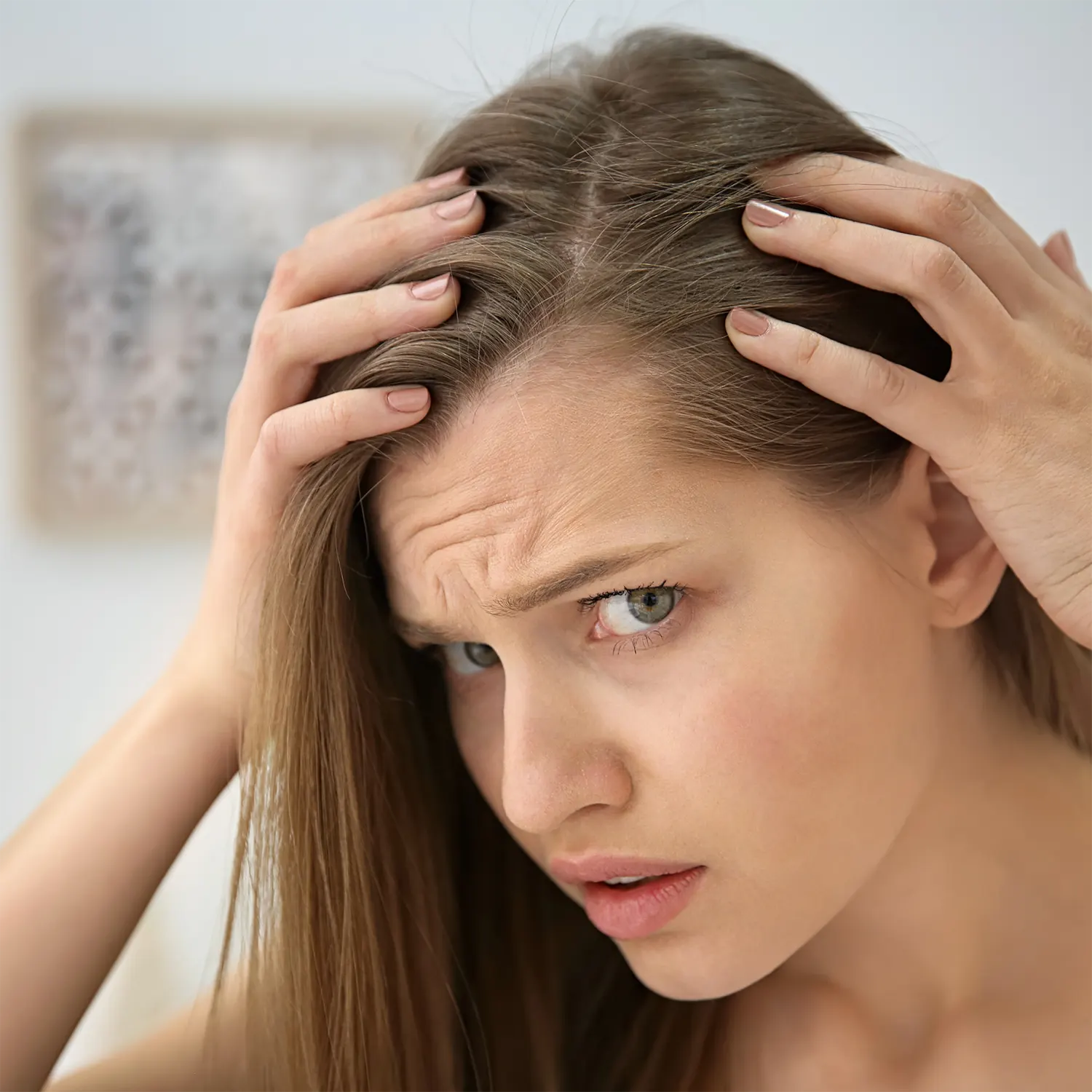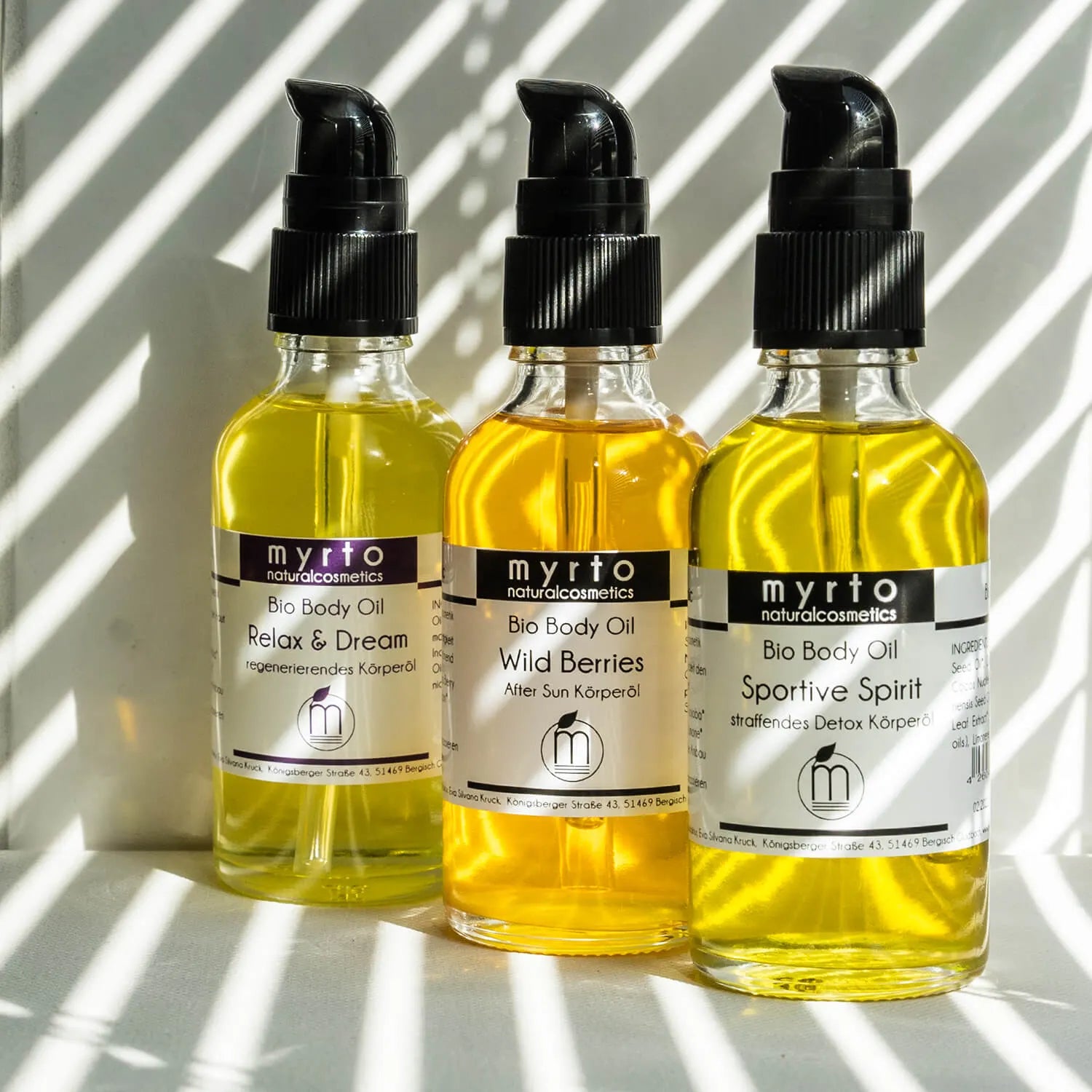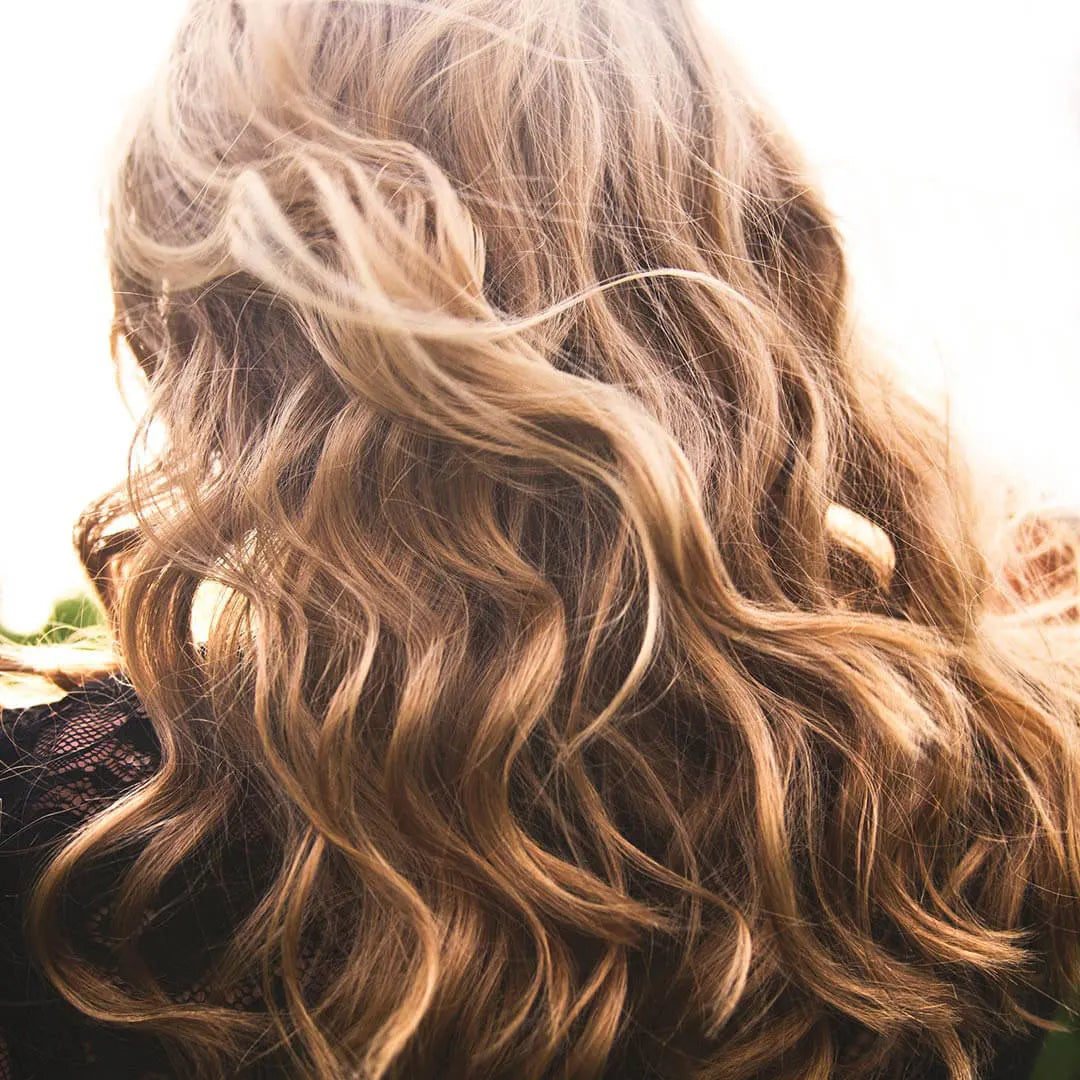
natural ingredients against hair loss
How can you recognize hair loss?
Most people have experienced increased hair loss at least once in their lives - especially in autumn and winter. If significantly more than 100 hairs fall out per day, this does not necessarily mean that the hair on the head becomes thinner, but the hair appears thinner in some areas. Long-term hair loss can become a significant psychological burden for those affected.
What growth phases are there in the hair cycle?
To understand how hair loss occurs, it is important to understand the normal cycle of hair growth. Each individual hair has its own growth cycle, independent of that of any other hair. So it happens that part of our hair is in a growth process, while another part is in the resting phase or in the process of falling out and then being replaced. This is a natural process and nothing to worry about.
The natural hair cycle can be divided into 3 phases:
The growth phase (anagen phase) lasts about 4 - 6 years and contains up to 85% of all hair. In the anagen phase, the hair is formed from the hair root and becomes longer and stronger over time.
- The transition phase (catagen phase):
Cell division in the hair root temporarily stops, meaning the hair no longer grows and detaches from the root. Approximately 1-3% of all hair follicles on the scalp are in this phase, which lasts around 2 weeks. The hair root becomes increasingly keratinized before moving into the telogen phase. - The resting phase / shedding phase (telogen phase) lasts about 4 - 6 months. The metabolic activity of the hair follicle is reduced, which means that the hair is increasingly poorly supplied and is ultimately shed because new hair grows back. About 8 - 14% of all head hair is in this phase for about 3 months. The hair cycle then returns to the growth phase to start again.
Hair grows on average about 1 cm per month. The length of the hair depends primarily on the length of the growth cycle, rather than the speed of growth. When hair loss increases, the growth phase is shortened in favor of a longer resting phase, so that only shorter hair is formed.
What can cause hair loss?
Since we are closely connected to the cycle of the seasons, hair loss is often a temporary natural phenomenon that tends to increase with the onset of autumn, due to the increased UV radiation in the summer months. Thinning, brittle hair and hair loss can also be hereditary. In women, diffuse hair loss usually occurs during times of hormonal fluctuations, such as after stopping the pill, during menopause, but also after pregnancy or breastfeeding. Other causes of increased hair loss can be pollutants and environmental toxins, ongoing stress, side effects of medication, thyroid diseases or an unbalanced diet low in vital nutrients.
Can harsh shampoos and incorrect hair care be responsible for hair loss?
Incorrect care often leads to hair loss: Most shampoos contain high levels of skin-irritating, aggressive washing substances. You can tell this because such surfactants - such as sodium lauryl sulfate, sodium laureth sulfate or sodium coco sulfate - are at the top of the ingredients list (INCI). Rinses, conditioners, hair masks and hair styling products also usually contain such aggressive surfactants. Treatments such as chemical hair dyes, permanent straightening or perms also damage the hair follicles, make the hair brittle and fragile and can lead to increased hair loss.
Why are medications for hair loss not a good solution?
Numerous medically approved drugs for hereditary hair loss interfere with the body's hormonal balance. Hormonally active hair growth products such as minoxidil, finasteride or alfatradiol temporarily reduce the DHT formed from testosterone at the hair roots in men and women, but they can only stop hair loss for the duration of their use. Hair loss continues after the drugs are stopped. These drugs also cause undesirable side effects when used over a long period of time, such as itching, dandruff, dry eczema, intolerances, allergic reactions, cardiovascular problems or even hair growth not only on the head.
Synthetic vitamin and mineral preparations are also offered as dietary supplements to combat hair loss, brittle and thinning hair. Such isolated micronutrients differ only minimally from natural ones in their chemical structure, but they have much poorer bioavailability. Synthetic vitamins and minerals can hardly be absorbed by the body because essential natural accompanying substances are missing. It is only the complex interaction of the naturally occurring vitamins, minerals and the numerous accompanying substances in natural active ingredients, such as secondary plant substances, that creates the actual health-promoting effect.
Natural ingredients for thicker and stronger hair
There are some holistically effective and clinically proven natural ingredients that promote healthy hair growth and counteract hair loss. They optimize the supply of micro-nutrients, vitamins and minerals to the hair roots in a natural composition.
-
millet seed extract
Millet seed extract from CO2 extraction contains a high proportion of miliacin. This clinically proven natural active ingredient stimulates the extension of the hair growth phase and improves the supply of micronutrients to the hair root. It has been proven to accelerate the cell division rate directly at the hair root, where hair growth takes place (Pubmed, Cosmet.Dermatol.02-2020, 485-493). The unsaturated linoleic acid in the millet seed extract also has an anti-inflammatory effect. It contains the minerals silica, iron, vitamins B, E, K and folic acid, which are important for healthy hair growth, in a natural composition. -
rosemary extract
Rosemary is used medicinally to combat hair loss, dandruff and thinning hair. It stimulates healthy blood circulation in the scalp, has an antibacterial effect and improves the supply to the hair roots. Rosemary contains the potent natural ingredient carnosic acid, which is able to neutralize free radicals that are thought to be responsible for hair loss (Pubmed 1-2- 2015;13(1):15-21). -
burdock root extract
Burdock root with the active ingredients Arctinol and Lappaphene strengthens the hair structure. The plant extract is also known as "hair growth herb". With long-term use, it improves existing, genetically caused hair loss (androgenetic alopecia), stimulates blood circulation in the hair roots, protects against moisture loss and detoxifies the scalp. -
sandalwood extract
Studies conducted by the Monasterium Laboratory in Münster in 2019 found that sandalwood oil significantly prolongs the hair growth phase when the hair follicle is exposed to the fragrance.
The right products for improved hair growth
For healthy hair growth and fuller hair, we recommend the myrto organic shampoo sandalwood millet and the regular use of the myrtoorganic scalp treatment H for at least 3 months. We also offer the myrto organic hair care set to combat hair loss.
What else you can do to prevent hair loss
-
Regular scalp massages
If your hair is thinning or brittle, a regular scalp massage can help. In a US study, participants noticed an increase in hair thickness after 6 months of daily scalp massage. The scalp massage should last at least 5 minutes. Use your fingertips and massage the scalp in circular movements to improve blood flow to the hair roots.
Regular use of a brush with natural bristles is also helpful in stimulating blood circulation in the scalp. In addition, brushing distributes the natural hair oil or sebum from the roots to the tips. This keeps the hair supple and less prone to breakage. -
The right diet
To prevent hair loss, you should also eat a healthy, wholesome diet. Human hair is made up of over 90% keratin. Our body forms keratin from various proteins. A protein-rich diet provides the body with the necessary building blocks to form this protein. Protein-rich foods that support keratin formation include eggs, avocados, lentils, sweet potatoes, spinach, soybeans, walnuts and pumpkin seeds. Supplementary minerals such as zinc, selenium or silica in natural composition promote healthy hair growth, as do vitamin B3 (niacinamide), vitamin C and biotin.




